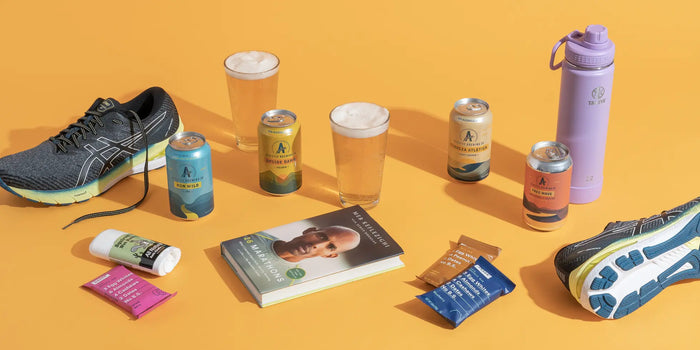According to a report done in 2020, 15% of Australians some form of running or jogging. This makes chafing skin that is associated with running a very common issue.
This is something that many runners complain about as chafed skin is painful and irritating. It can also make it harder to reach your running goals and accomplish your milestones.
The good thing is that there are ways to help with chafing for runners. These tips are a great place to start if you are a runner who is dealing with chafing.
Keep reading to find out what you can do to treat and prevent chafing while running.
1. Wear Synthetic Materials
Synthetic materials are going to be your best friend when it comes to running. Though you may normally go towards cotton, this is not a great option for runners.
Natural fibers like cotton tend to be absorbent and will hold on to moisture as you run. This will cause more chafing skin and more skin irritation overall.
Synthetic materials are more slippery and will not absorb as much moisture as natural fibers. They also tend to chafe less and are gentler on the skin as you are running for long periods of time.
It is best to look for synthetic materials that are sweat-wicking. This will help to absorb moisture without holding on to it and chafing away at the skin as you run.
2. Wear Well Fitting Clothing
When you are going to be running, the fit of your clothing is more important than you might realize. Clothes that don't fit correctly could cause sports injuries or skin injuries as you run.
You do not want to wear clothing that is too tight as this can cause a great deal of discomfort. Tight clothes will cause chafing skin and can dig into your skin causing blistered skin in those areas.
But you also do not want to wear clothing that is too loose as this can also cause chafed skin. Loose clothing can become moist and rub on your skin as you are running.
It is best to choose underclothes options that are just the right fit and have a certain amount of giving. You want your clothing to fit just right but still have some stretch in case you need it.
Socks and shoes specifically should have some give as your feet might swell while running. You could get blistered skin if your socks or shoes are too tight and cannot expand to a certain degree.
3. Use a Lubricant
Using a lubricant is a great idea for areas of the body that are prone to chafing. This is a preventative measure that can help to reduce skin injuries when running for long periods of time.
Vaseline is the most common lubricant, though some people will also use different types of oils. These lubricants work by creating a lubricating barrier for your skin.
This helps to stop chafing from happening as your skin cannot rub together and cause irritation. Runners commonly do this in specific areas, such as between their thighs where chafing often occurs.
If you have chafing that you just can't seem to stop from happening, this could be a great solution. Especially if you only have chafing issues in specific areas.
4. Stay Hydrated
Staying hydrated throughout your run is also an important way to reduce your chances of having sports injuries. Though you may already know this, being hydrated can also help with chafing skin.
When you are dehydrated your body has a much harder time flushing salt from your skin. Dehydration makes it harder to sweat and can cause salt to build up on your skin.
These abrasive salt crystals can enhance chafing and make the skin irritation much worse. Staying hydrated allows you to sweat profusely as you run to keep your skin free of these dried salt crystals.
Staying hydrated also helps to dilute your sweat so that your sweat is not as salty. If you are not hydrated enough, your sweat will be much more concentrated and irritating.
5. Start With Moisturized Skin
If you are going to be going running the next day, you can begin preparing for chafing skin early. You can do this by ensuring that your skin is moisturized before ever running.
Keeping your skin moisturized before a run is a great way to prevent chafing as well as blistered skin. This helps your skin to be less dry, which is a big contributor to chafing while running.
Moisturized skin is much less likely to cause irritation as it rubs together. This works much like using a lubricant does as your skin has a moisturized barrier.
You should moisturize your skin the day before going running as well as moisturizing before you go running. Make sure you use a moisturizer that soaks into the skin instead off simply sitting on top of it.
Otherwise, you will sweat your moisturizer off and it won't help with chafed skin.
6. Consider the Weather
If you want to go running, it is always a good idea to take the weather into consideration. Hot and humid weather causes the most chafing as it causes you to sweat more.
Hotter weather also creates more risk of becoming dehydrated, which no runner wants to experience. It is best to run in mild weather or to pick a time of the day that is the coolest.
7. Wear Anti-Chafing Bands
Anti-chafing bands are specifically designed to help people combat chafed skin. These are usually available as thigh bands as this is the most common area for chafing.
Anti-Chafing bands are made from synthetic blends that are not going to absorb a bunch of moisture. They also come with silicone to help them stay in place as you run.
Chafing bands help to create a material barrier between your skin to protect your skin. This is an ideal option for runners as thigh chafing is very common and can be very painful.
These bands can easily be worn under your normal running clothes without adding any bulkiness.
8. Use Powders
Powders are a chafing solution that has been around for a long time. Though this isn't an ideal option for preventing chafing, it can help to reduce it once chafing has already started.
Cornstarch-based powders are the best option as they are silky on the skin while being highly absorbent. Powders create a barrier so that your skin is not repeatedly rubbing against itself.
It also helps to absorb sweat in those areas as moisture can cause greater chafing. You can easily apply a powder to problem areas if you are starting to feel chafing.
This is a great way to reduce chafing and help your skin to be better protected for the remainder of your run.
9. Be Mindful of Your Equipment
If you are running for long periods of time, you most likely have to take certain kinds of equipment with you. This is something that most runners do, especially if they are running long distances.
You may want to bring a water bottle, heart monitor, armband, belt, or other kinds of equipment with you. If you do run with any kind of equipment, it is important to be aware of any chafing that it could cause.
Armbands, belts, and any other kind of equipment could easily become a chafing issue for your skin. They could begin to rub and cause abrasiveness that could result in blistered skin or chafing.
You will want to choose a runner-specific type of equipment and be aware of any damage it causes as you run. You may have to get creative if you find that running equipment increases your risk of chafing.
10. Wear Running Clothes
Running clothes are the best option for runners for obvious reasons. There is a reason why there are clothes made specifically for runners.
These types of clothing will be made of synthetic materials that are best for running in. They won't be absorbing a bunch of sweat or rubbing against your skin as you run.
Many high-quality pieces of running clothing will also be seamless or have very minimal seams. This can make a huge difference as seams can rub against the skin causing painful chafing.
Running clothes also have the elasticity to them to help you to find a better fit. You don't want to wear anything that is too tight or too loose for longer runs.
How to Deal With Chafing Skin as a Runner
If you are struggling with chafing skin, there are several ways that you can try to prevent this. This is important for runners as chafed skin is one of the most common issues and can be very irritating.
If you are a regular runner or run for long distances, this is most likely an issue that you have faced. It might have even been a big enough issue to interfere with your running goals.
Are you struggling with painfully chafed skin while running? Contact us today at Squirrel's Nut Butter to see our selection of anti-chafing products for runners.




